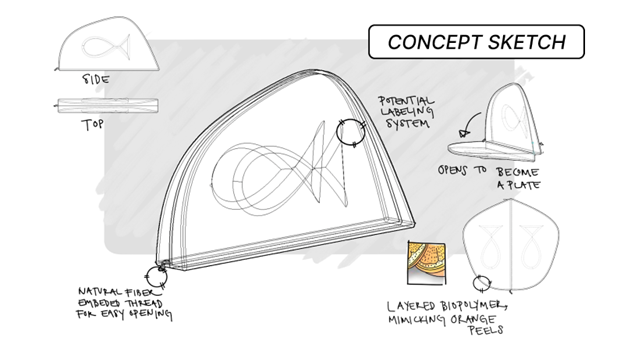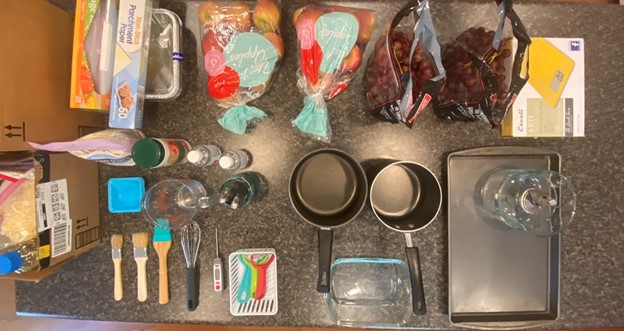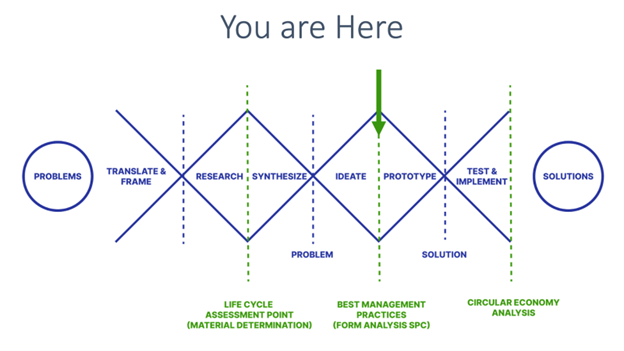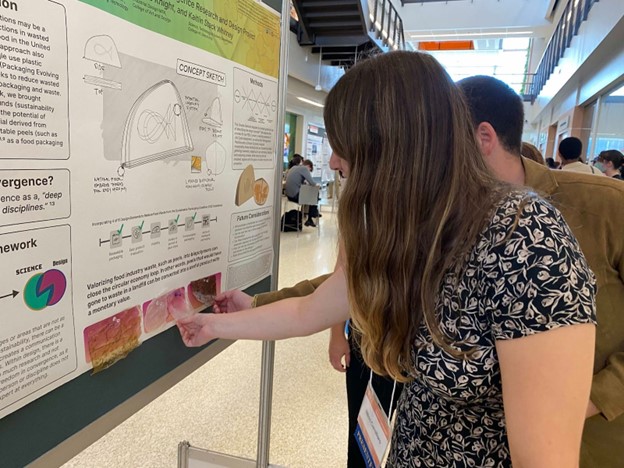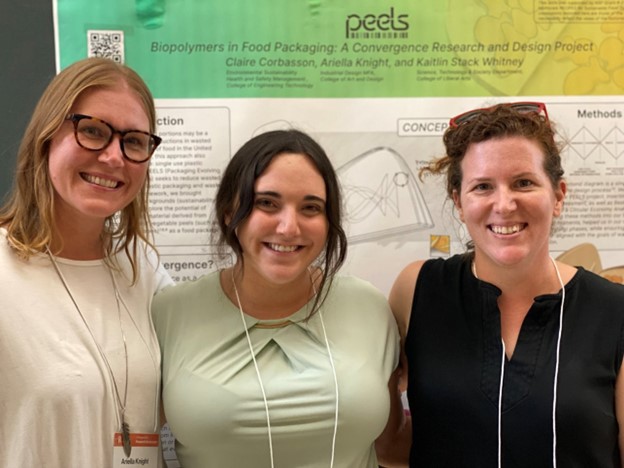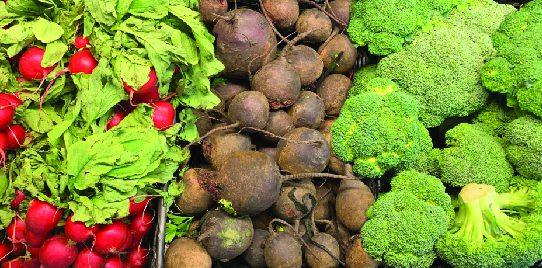By Claire Corbasson and Ariella Knight
PEELS (Packaging Evolving and Encasing Little Snacks). Using a convergence framework, we brought together our different backgrounds (sustainability science and industrial design) to explore the potential of a biopolymer made from fruit and vegetable peels as a food packaging alternative to plastic.
Being part of a large multi-university network dedicated to tackling the wicked problem of food waste felt a little intimidating at first. There is a lot of jargon. What’s a cluster (in this case)? What’s the difference between convergence and collaboration? Does valorization mean what we think it means? These were some of the questions that we mulled over during the first week at our summer research experience (Co-Op) at Rochester Institute of Technology in upstate New York. And while all of these questions were answered in due time (no, valorization does not have anything to do with bravery), neither one of us expected the lightbulbs the convergent process would shine on our own project.
When deciding what to do for the independent research part of our Co-Op it was seductive to look at big ideas and big solutions. Food waste is, after all, a big problem. When we took a step back and looked at our timeframe and what felt reasonable, we decided to get really small– bite sized even. We looked at little snacks.
It has been common practice in schools for snacks to be sized in single-servings. But what does that mean for food waste? The research surprised us.
In an August 2020 article in the Journal of Cleaner Production Helén Willams, an Associate Professor of Environmental and Energy states that:
“Encouraging more serving size packaging at a time when many want to discontinue packaging completely, is controversial. But our research shows that food in smarter packaging, for example in smaller portions which can be eaten to a greater extent, are better for the climate even if more packaging materials are used.”
The drawback to single serving sizes is that it creates another waste stream all together–that of single-use packaging. Packaging now accounts for the majority of the plastics industry and there is growing concern that single-use plastics could result in a near-permanent contamination of the natural environment. Even if single serving snacks could reduce food waste neither one of us was comfortable perpetuating single-use plastics. Could there be a better solution?
As part of the network, we were thinking a lot about valorization. Valorization is the process of converting waste into a usable commodity. And what is this network trying to eliminate? Food waste! Over the next two months we explored a variety of industrial food wastes that would never increase food insecurity, how they could be valorized, and what that ideal system could look like. We designed forms and shapes, researched biopolymers, and even made some ourselves.
We did all of this through a convergent (mashed together) version of a double diamond design process. We made our own additions, like Claire’s Life Cycle Assessment experience to Ariella’s sketching and prototyping practice.
While our project doesn’t solve food waste, it still has lots of room to grow and become more scalable. Hopefully, we’ve demonstrated the power of convergent thinking and collaboration – and PEELS can play a small role in the big overall future web of solutions.
We presented PEELS (Packaging Evolving and Encasing Little Snacks) at the RIT Undergraduate Research Symposium on July 28th, 2022. We showcased this project again during the RECIPES network student meeting on August 3, 2022, where we discussed our process from establishing a framework, to biopolymer making, to what software programs we used. Explore more about how we engaged in a food waste solution-oriented convergent project here and watch our presentation here.
Pictures posted with permission from Claire Corbasson and Ariella Knight August 8, 2022.
